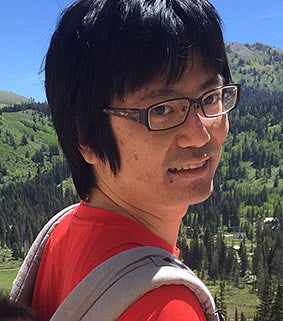Hironori (Hiro) Uehara is an expert in basic molecular biology with deep ophthalmological knowledge and experience in various animal models and practices. He has more than 15 years of experience in molecular biology and 12 years in experimental ophthalmology. In 2007, he earned his Ph.D. in life science at the Tokyo Institute of Technology in Japan. During his Ph.D., Hiro developed a new method to analyze mRNA expression in single living cells using atomic force microscopy. This cutting edge method enabled the analysis of mRNA localization and time-course changes at the same time. Since moving to the United States, Hiro has focused on basic science applications in ocular diseases in Dr. Ambati’s lab, first as a postdoctoral fellow at the Medical College of Georgia, and then as a research assistant professor at the University of Utah and Loma Linda University.
Hiro has developed methods of control of alternative splicing of mRNA by DNA analogs which successfully inhibit angiogenesis and/or lymphangiogenesis in the corneal transplantation mouse model and age-related macular degeneration mouse models. He also developed an adeno-associated virus (AAV) encoding various recombinant proteins. Among them, AAV-COMPang1 and COMPang1 as a modified angiopoietin1, which rescued diabetic retinopathy by normalizing blood endothelium in a type I diabetic mouse model. Recently, he has developed a CRISPR/Cas9 based therapy for Fuchs’ endothelial corneal dystrophy (FECD) which successfully rescues corneal endothelium in early-onset FECD mouse models.

